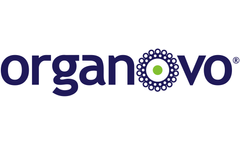Bioprinted Human Liver Tissue Articles & Analysis: Older
9 articles found
Bioactive factors: These are growth factors, nutrients, and other signaling molecules that can help the cells to survive, proliferate, and differentiate into the desired tissue type. How Does Bioprinting Work? Bioprinting is a complex process that involves using a specialized 3D printer to deposit layers of bio-ink onto a platform. ...
ByMatexcel
By combining different cell populations in a fibrin bioink, researchers from Trinity College Dublin, Royal College of Surgeons in Ireland and University of Illinois Chicago were able to sprout an in vitro microvessel network that was then exploited to prevascularise a 3D printed scaffold implanted in a critical size femoral defect using REGENHU bioprinter. This dual approach was observed to ...
ByRegenhu
The next great symbiotic relationship for humans could be between fabricated tissues and pond scum. Allevi Authors at Harvard Medical School and Brigham and Women’s Hospital recently published their findings on the use of algae in tissue engineering. ...
Publication Summary: The identification of targets and biomarkers and development of therapeutics for nonalcoholic fatty liver disease (NAFLD) may be accelerated by the use of well-characterized primary cell and tissue reagents, as well as improved in vitro human cell-based disease models, including three-dimensional (3D) ...
Publication Summary: Nonalcoholic fatty liver disease (NAFLD) is a chronic condition that originates as lipid accumulation within hepatocytes (steatosis) and progresses into nonalcoholic steatohepatitis (NASH), characterized by lipid accumulation, inflammation, oxidative stress, and fibrosis. NAFLD is now recognized as the most common cause of chronic liver disease in the western world, with an ...
Publication Summary: The growing global incidence of NASH mirrors the availability of nutrients. Over-nutrition also results in insulin resistance and type-2 diabetes, which are often co-morbidities associated with NASH and are known to drive more adverse outcomes. MSDC-0602K, a modulator of the mitochondrial pyruvate carrier (MPC), is in clinical trials as a potential treatment for NASH. ...
Publication Summary: Compound induced chronic liver injury can lead to initiation of profibrotic processes resulting in sustained production of growth factors and profibrotic cytokines where inflammation, tissue remodeling and repair pathways are activated simultaneously to counteract the injury. Evaluation of potential antifibrotic therapies are limited using ...
Publication Summary: Nonalcoholic fatty liver disease (NAFLD) is a chronic condition that originates as lipid accumulation within hepatocytes (steatosis) and progresses into nonalcoholic steatohepatitis (NASH), characterized by lipid accumulation, inflammation, oxidative stress, and fibrosis. NAFLD is now recognized as the most common cause of chronic liver disease, with a prevalence of 25% ...
Here, we report fabrication, implantation and engraftment of a human bioprinted therapeutic liver tissue (BTLT) containing human umbilical vein and liver endothelial cells, hepatic stellate cells (HSC) and hepatocytes (Heps) in a transgenic mouse model of alpha-1 antitrypsin deficiency (AATD). ...




